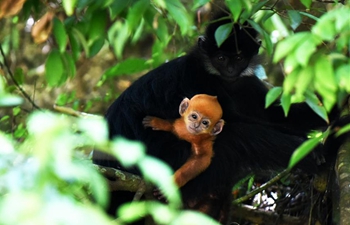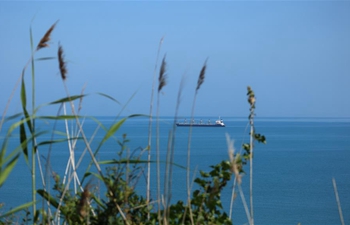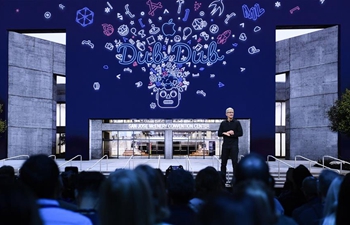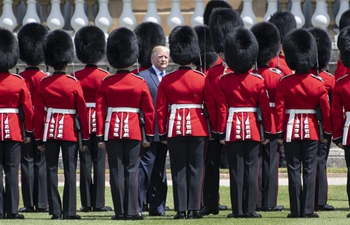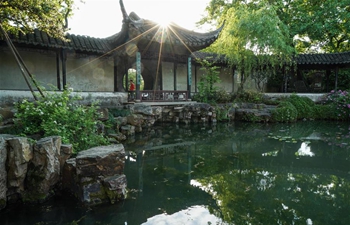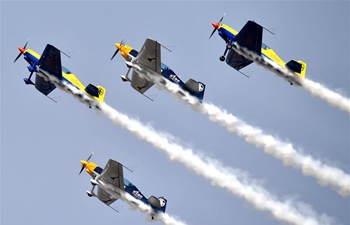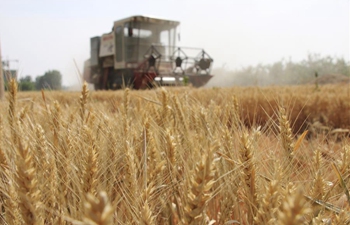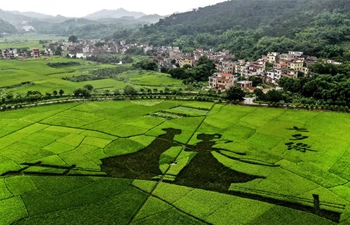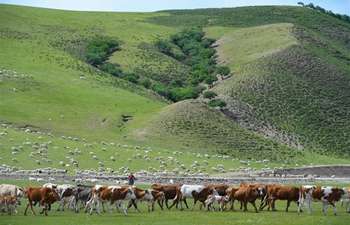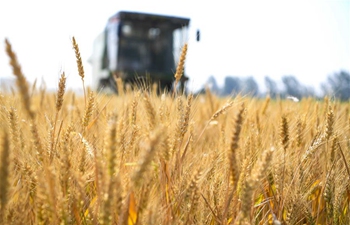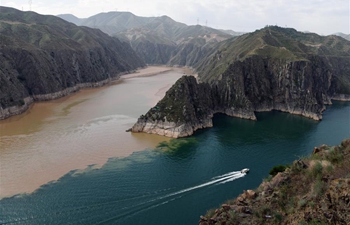
Photo taken on June 4, 2019 shows government buildings inside the Green Zone, Baghdad, Iraq. For the first time since the U.S.-led invasion in 2003, main streets in Baghdad's heavily-fortified Green Zone were fully opened to traffic on Tuesday, mending a 16-year rift between the city's residents and politicians well-secured beyond the zone's high concrete-walls. (Xinhua/Khalil Dawood)
BAGHDAD, June 4 (Xinhua) -- For the first time since the U.S.-led invasion in 2003, main streets in Baghdad's heavily-fortified Green Zone were fully opened to traffic on Tuesday, mending a 16-year rift between the city's residents and politicians well-secured beyond the zone's high concrete-walls.
Iraq's Prime Minister Adel Abdul Mahdi said during his weekly press conference on Sunday that the zone will be opened for 24 hours from the first day of Eid al-Fitr, which marks the end of the Muslim fasting month of Ramadan.
He said the decision to open the zone wasn't an easy one to take, but it came after "reassurances about the security situation," as quoted by a statement issued by his media office.
"The opening of the green zone will positively reflect on traffic movement in the city. I had to leave my car at home because sometimes my commute in the city would take up to two hours," said Iraqi artist and journalist Jasim al-Sheikhly.
Nestled on the river Tigris, the 10-square km strip is home to the presidential palace and the Iraqi parliament, and it also houses the U.S. embassy.
"The opening of the Green Zone and the removal of concrete-blocks will reduce traffic congestion, but they still need to look after the people, because they're still suffering from many problems," Baghdad resident Ali Kadhim told Xinhua, praising the move and voicing his demands from the government.
Kadhim said he wishes to see improvements in the education sector, more job opportunities and solutions for the water and electricity shortages, adding "removing concrete blocks is not enough."
During the past few months, the Baghdad municipality and Joint Operations Command have lifted thousands of concrete blast-walls surrounding the zone, revealing buildings still-damaged from the U.S. bombing 16 years ago, unmaintained roads and uncelebrated monuments - a metaphor for the state's negligence.
For most Iraqis, the Green Zone represents a symbol for injustice, inequality and for everything that was, and still, wrong with the successive post-invasion governments.
"People couldn't enter the zone or even pass through its streets before, as only those authorized and those with special cards could do so. But now the security situation is better and everyone could drive through it," Kadhim added.
The rampant corruption of post-invasion governments has made the zone notorious, and people lamented politicians for living there with their families in luxury while bombings ripped the rest of the city's residents apart just outside its concrete-walls and barbed-wire fencing.
Most young Iraqis have never set foot inside the zone as it remained inaccessible for most Iraqis and only allowed those with special cards in, fueling resentment among people who remain plagued with insecurity and myriad daily hardships even 16 years after the invasion.
However, many Iraqis see the move as a sign of improvement in a country still shaking off the dust of war and conflict.
"It is a step towards the right direction and a sign of improved security, not only in Baghdad but in the entire country," boasted a security officer who spoke to Xinhua on condition of anonymity.
"Security measures have also been elevated, as the forces are using modern surveillance cameras and are increasing their intelligence efforts after the opening of the zone," the officer said.
Earlier in November 2018, Abdul Mahdi ordered a partial opening of several streets in the Green Zone on experimental basis.
The long-awaited opening of the Green Zone is a sign of gradual recovery and a step towards a brighter future for the country after the victory over the extremist IS group in late 2017.




